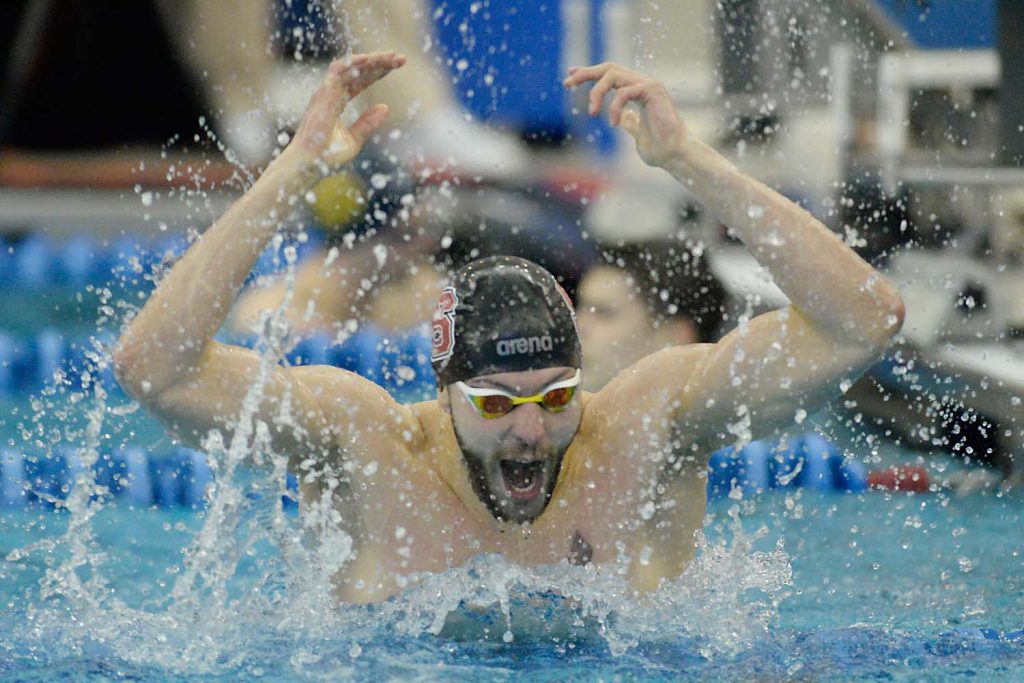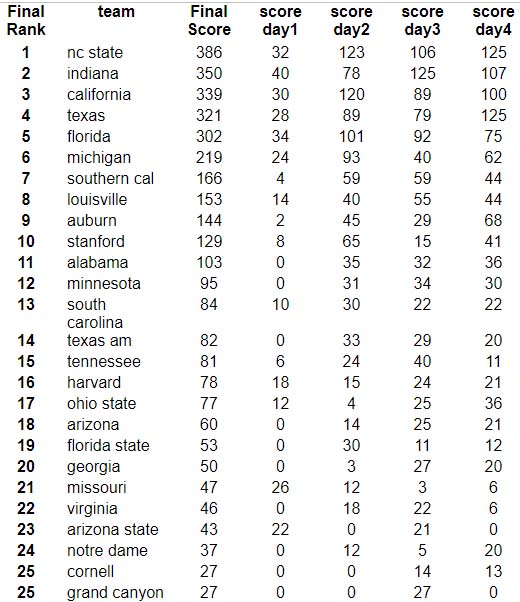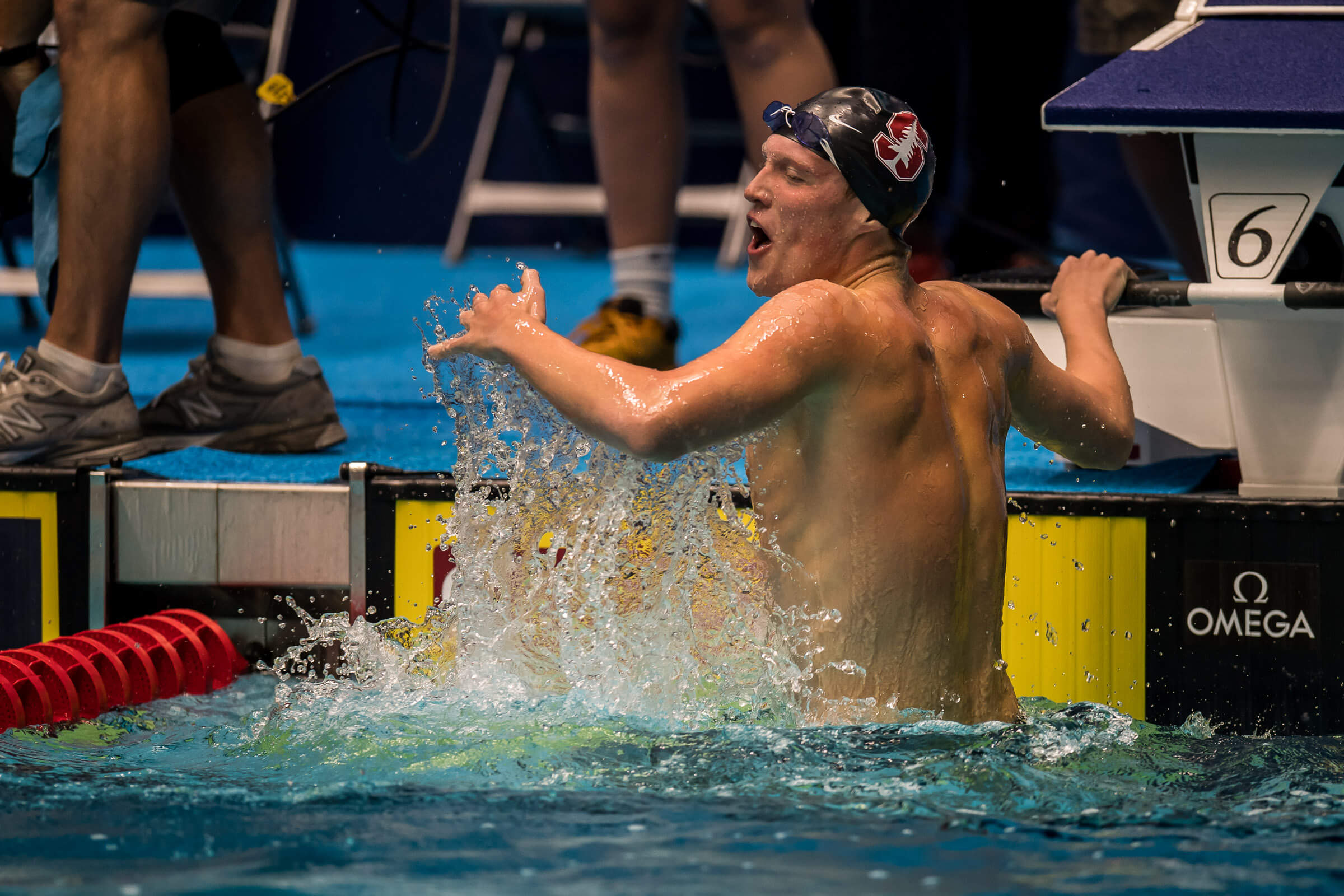Pointing Up? How Psych Sheets Project Men’s NCAA Swimming Champs

Editorial content for the 2018 NCAA DI Championship coverage is sponsored by TritonWear. Visit TritonWear.com for more information on our sponsor. For full Swimming World coverage, check event coverage page.
Morning Splash by David Rieder.
Prior to the women’s NCAA swimming championships last week, the psych sheet clearly spelled out that Stanford, Cal, Texas A&M and Michigan were likely to be the top four teams at the meet. Fast forward to the end of the women’s meet, and that’s exactly what happened. For the men’s NCAA championships, the pre-meet numbers are much less clear.
Without taking diving into account, the NC State Wolfpack are projected to finish first, followed by Indiana, Cal, Texas and then Florida. From there, it’s a big drop-off to sixth-seeded Michigan and the rest of the top 10. Check out the full breakdown of the psych sheet projections below.

Long story short, the point margins among teams in the top five are close enough that there could be and likely will be some scrambling. NC State, which entered seeded first last season before ending up fourth, will have to fight to maintain that spot, but it’s likely that any drop-off has more to do with the teams behind moving up.
In particular, Texas and Cal, widely considered the two biggest national title favorites, have a lot of room to move up. Townley Haas is seeded fourth, 11th and 35th in his events. John Shebat is seeded 14th in the 100 back and nowhere close to scoring range in anything else. It would be stunning if those two are not better.
Texas is known for big time drops come championship time, and so are the Golden Bears. Want some perspective? Last year, Texas scored 190 more swimming points than projections called for. Cal was plus-38. On the other hand, Florida (minus-7.5), NC State (-66.5) and Indiana (minus-123.5) all were way under.
As for the teams battling for positioning behind them, we might get some clues for how combined women’s and men’s programs might perform by looking at how their respective women’s teams did at the championships last week.
Michigan, seeded No. 6 right now, was minus-30, but that didn’t stop the Wolverines from posting a remarkable fourth-place finish in the team race. USC’s women were minus-58, dropping from a projected sixth-place finish all the way to 12th. That said, the Trojan women were minus-75 in 2017, and that didn’t stop their male teammates from a finishing plus-72 one week later.
Louisville’s women were plus-59 in Columbus, which is seemingly a good omen for their men’s team, while Auburn’s men won’t want to know that their women finished minus-41.5.

Photo Courtesy: Peter H. Bick
The biggest threat to that cluster of USC, Louisville and Auburn—and perhaps even to Michigan—is Stanford. The Cardinal men only graduated 34.5 of the 242 points they scored last season, and their 12 returning scorers are the most of any team. But a less-than-stellar showing at the Pac-12 championships has the Cardinal projected to score only 129 points. Abrahm DeVine and the distance crew, led by Grant Shoults, are the keys for Stanford.
Alabama, seeded 11th, is not as strong as in recent years, but Zane Waddell, Luke Kaliszak, Christopher Reid and Robert Howard all have a shot at individual points, so a top-ten finish is possible, and the same goes for the teams behind the Crimson Tide: Minnesota, South Carolina, Texas A&M and Tennessee.
Georgia’s trio of Olympians, Gunnar Bentz, Jay Litherland and Javier Acevedo, should propel the Bulldogs up from their projected 20th-place finish, but they likely lack the relays to come close to the top ten.
And then there’s Arizona State, widely projected for a big jump this season after scoring a dual meet win against Texas and coming close to knocking off USC. The Sun Devils are seeded 23rd, projected at just 43 points.
Bob Bowman indicated that his team was focused on the NCAA championships and not the Pac-12 meet, indicating that some drops may be in order, but they will need more than just two individual scoring swims they are projected for (Cameron Craig in the 200 free and Zach Poti in the 100 back). Craig should be capable of A-final points in the 100 free as well, while Grant House and Christian Lorenz could also move into scoring territory.
Remember: These are just projections. When the meet starts, none of this means anything to the swimmers in the pool. Momentum comes from good swims, not from psych sheet numbers. But what we do know is that for the first time since the women’s championships in 2016, there might actually be a competitive battle for the top few spots and even the championship.




.jpg)
Go Minnesota, and NC State too!